
Piercing the veil
A new exhibition at Buxton Contemporary finds a rich complexity in the shadowy terrain between life and death.
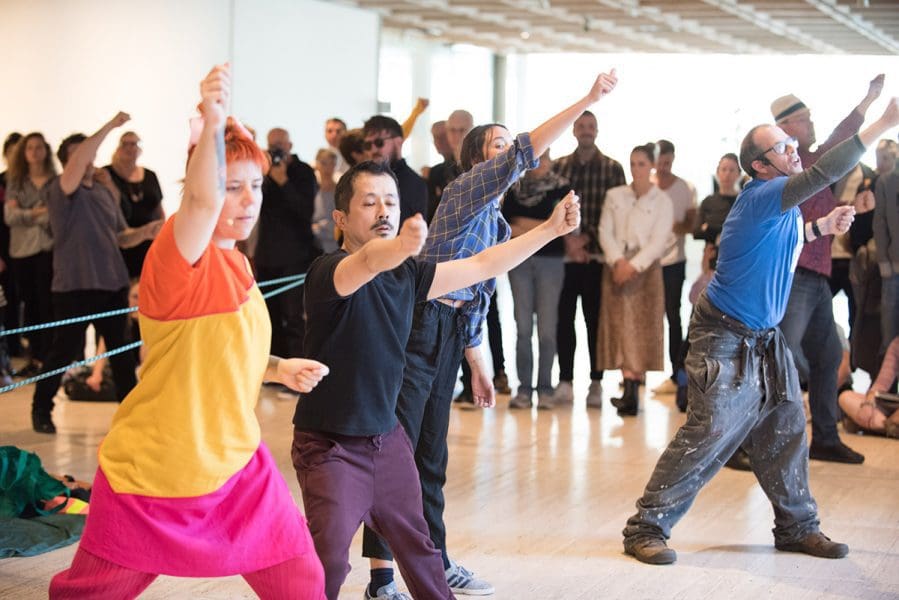
The Work, 2019, by Alicia Frankovich was performed by people who have worked behind-the-scenes for Kaldor Public Art projects during the last 50 years, AGNSW 14 September 2019. Photo: Hamish Ta-mé.
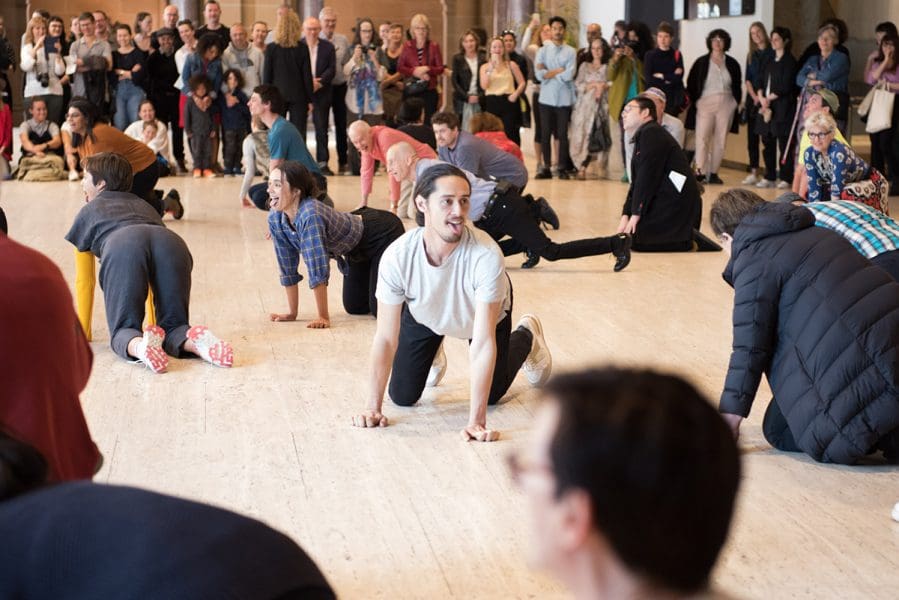
The Work, 2019, by Alicia Frankovich was performed by people who have worked behind-the-scenes for Kaldor Public Art projects during the last 50 years, AGNSW 14 September 2019. Photo: Hamish Ta-mé.
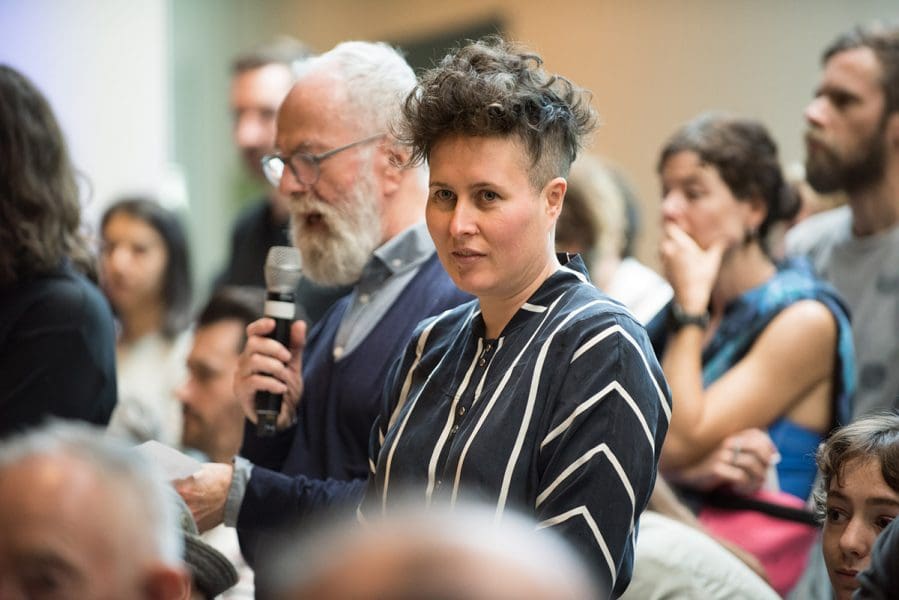
Alicia Frankovich (centre) watching people who have worked behind-the-scenes for Kaldor Public Art projects during the last 50 years perform her choreographed piece, The Work, 2019, AGNSW 14 September 2019. Photo: Hamish Ta-mé.
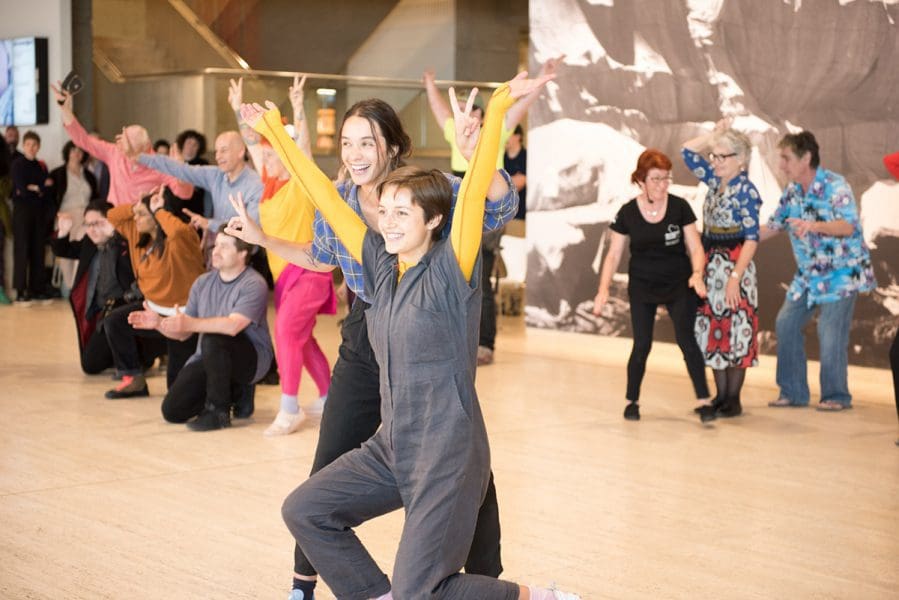
The Work, 2019, by Alicia Frankovich was performed by people who have worked behind-the-scenes for Kaldor Public Art projects during the last 50 years, AGNSW 14 September 2019. Photo: Hamish Ta-mé.
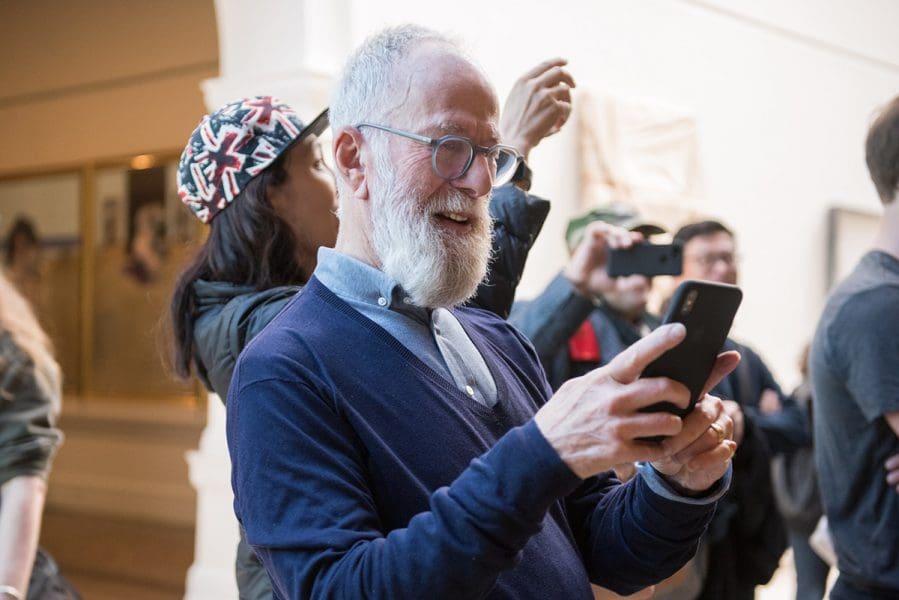
John Kaldor enjoying The Work, 2019, by Alicia Frankovich, AGNSW 14 September 2019. Photo: Hamish Ta-mé.
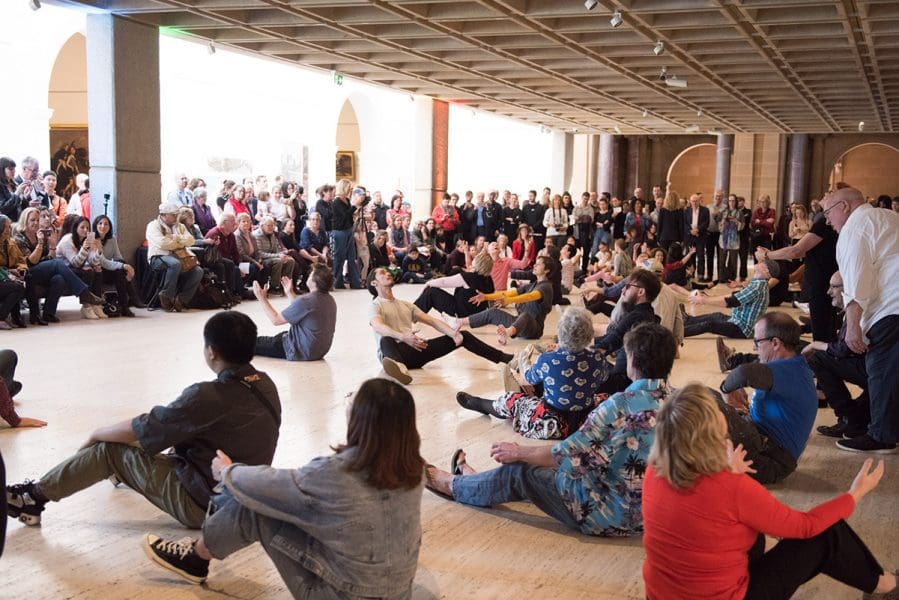
The Work, 2019, by Alicia Frankovich was performed by people who have worked behind-the-scenes for Kaldor Public Art projects during the last 50 years, AGNSW 14 September 2019. Photo: Hamish Ta-mé.
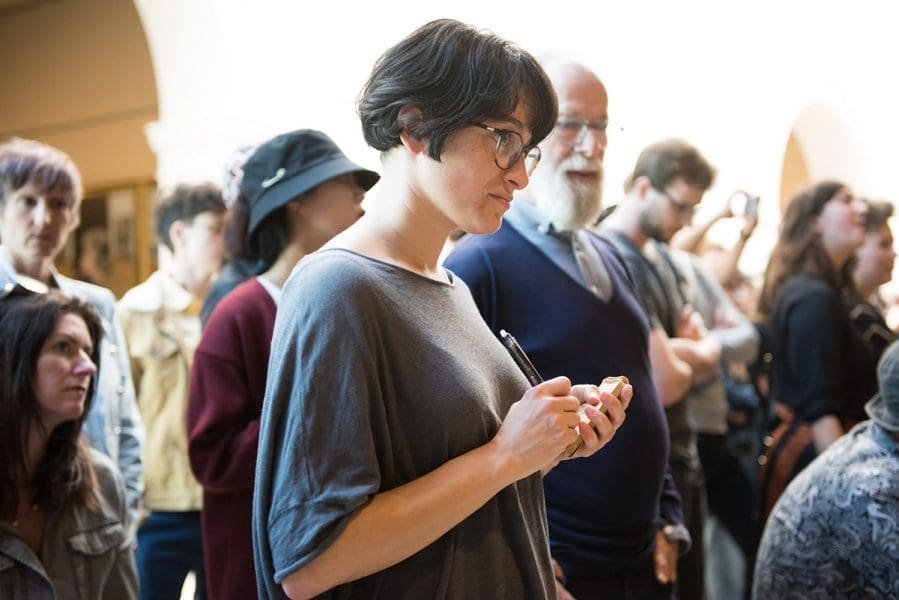
Art Guide’s Rebecca Gallo taking notes during the The Work, 2019, by Alicia Frankovich while John Kaldor looks on, AGNSW 14 September 2019. Photo: Hamish Ta-mé.
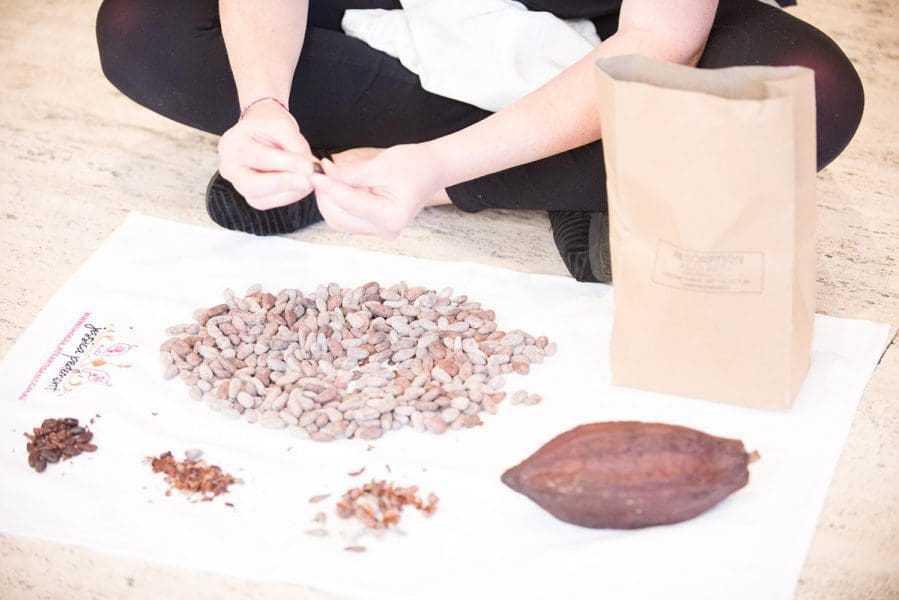
The Work, 2019, by Alicia Frankovich was performed by people who have worked behind-the-scenes for Kaldor Public Art projects during the last 50 years, AGNSW 14 September 2019. Photo: Hamish Ta-mé.

The Work, 2019, by Alicia Frankovich was performed by people who have worked behind-the-scenes for Kaldor Public Art projects during the last 50 years, AGNSW 14 September 2019. Photo: Hamish Ta-mé.
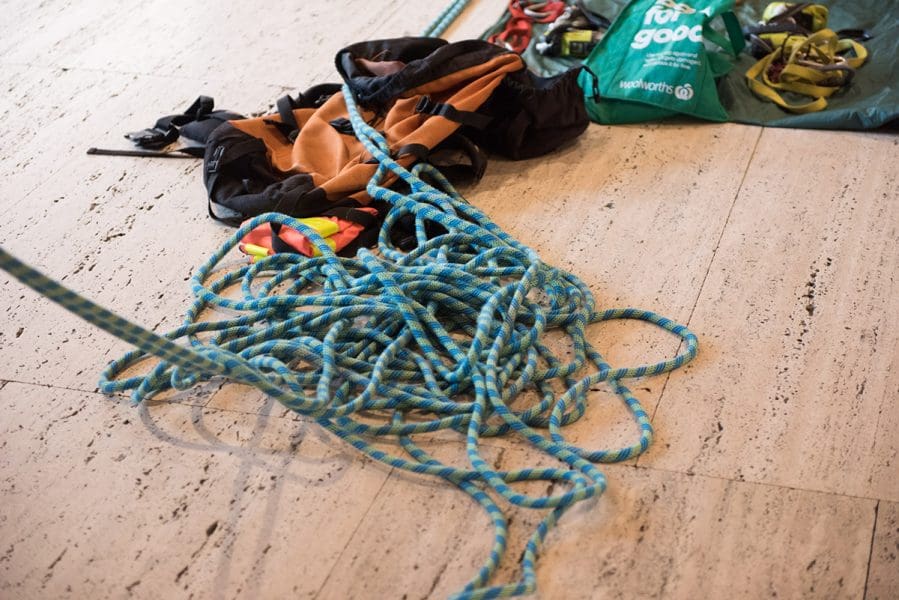
The Work, 2019, by Alicia Frankovich was performed by people who have worked behind-the-scenes for Kaldor Public Art projects during the last 50 years, AGNSW 14 September 2019. Photo: Hamish Ta-mé.

The Work, 2019, by Alicia Frankovich was performed by people who have worked behind-the-scenes for Kaldor Public Art projects during the last 50 years, AGNSW 14 September 2019. Photo: Hamish Ta-mé.
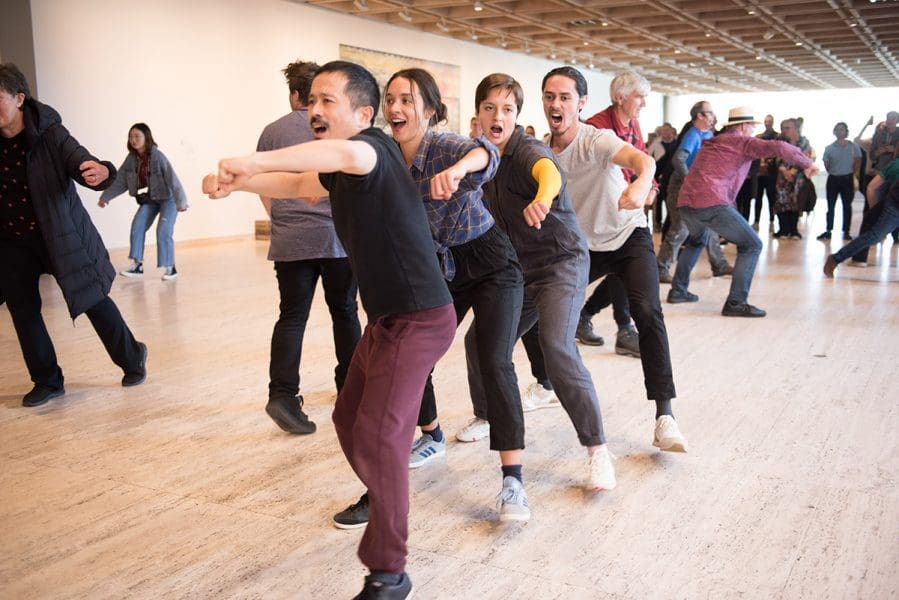
The Work, 2019, by Alicia Frankovich was performed by people who have worked behind-the-scenes for Kaldor Public Art projects during the last 50 years, AGNSW 14 September 2019. Photo: Hamish Ta-mé.
In 2019 Kaldor Public Art Projects turned 50 years old. For the final feature in our series commemorating this milestone, Art Guide Australia asked writer Rebecca Gallo to share her thoughts on Alicia Frankovich’s choreographed performance, The Work, which was specially commissioned to mark this anniversary. Readers in Sydney can see The Work at the AGNSW on 28 September at 1pm.
As we mill around under the unmistakable brutalist ceiling of the Art Gallery of New South Wales (AGNSW) foyer, there is a collective sense of anticipation. The audience instinctively forms a rectangular perimeter, but the distinction between performers and spectators remains immaterial; there is no designated platform or clear physical barrier. People – performers perhaps? – dressed in civvies, walk slowly across the floor before joining the crowd, and others emerge from the edges to stand in the cleared rectangular space. A few older blokes saunter through, seemingly oblivious to the invisible threshold, probably on their way to the gallery cafe. The fact that they are on show doesn’t even seem to register.
We are here for Alicia Frankovich’s The Work, a performance commissioned for Making art public: 50 years of Kaldor Public Art Projects. The performers will be 38 individuals who have worked, behind the scenes and in the wings, on previous Kaldor Public Art Projects. Their roles could have been anything from arranging thousands of flowers into the shape of a sitting terrier for Puppy, 1995, by Jeff Koons, to helping secure one million square feet of polypropylene to coastal cliffs at Little Bay for Christo and Jeanne Claude’s Wrapped Coast, 1969. More recently, some of these workers-turned-performers may have sampled and tested soil for hours and days on end for Asad Raza’s Absorption, 2019. Today, though, it is these workers who are on stage: they have become the performers.
I find myself standing near John Kaldor in the audience. Art Guide’s photographer Hamish Ta-mé asks me to stand next to John and keep writing; John peers over at my tiny notebook and I feel self-conscious. He seems to smile knowingly. Perhaps he thinks this is all part of the show. Maybe it is.

Like the oblivious blokes heading to the cafe, I had been oblivious to the fact that my ‘writing about performance’ was itself being performed. But it is fitting: like the performers in The Work, my performance of labour takes on a double meaning as Hamish documents my feverish note-taking.
Three security guards in black suits sweep the inner perimeter of the crowd, looking above our heads, beyond us. I realise there is a fourth wall; that they are performing the role of ‘security’ rather than actively undertaking it. We are witnessing the muscle memory of a job long finished – in this case, back in 2013 for 13 Rooms.
In the labour market we talk about people ‘performing’ roles all the time. Here, the guards are performing their past selves performing those roles. The actions are emphasised and stylised, detached from utility. If the same actions, removed from context and erased of intent, are not the ‘job’ itself, what constitutes the job? Is it time and place, intent and affect?
Later on, I will meet Agatha Gothe-Snape near her work – another new commission for Making art public –and she will remind me that we are all performing all the time under late capitalism. Now more than ever, labour and leisure, socialising and networking intertwine, overlap and merge, and both Gothe-Snape’s and Frankovich’s works highlight the performativity of the everyday.
The three security guards from 13 Rooms, along with 35 other workers, have been cast as performers by New Zealand-born artist Alicia Frankovich. Frankovich uses choreography to test the edges and limits of social and cultural relationships. Physical movement reflects codes of human behaviour; volumes of evolutionary and cultural information is communicated through the ways we move in relation to other beings and objects in the world. In particular, Frankovich is interested in the ways that bodies might adapt – or not – in a world where technology, culture and the environment are changing rapidly.
In The Work, the focus is on the labouring body. How do bodies act and react when they are put to work? What might this reveal about physical strength and limitations, power dynamics and social relations?
The Kaldor Public Art Projects team expands and contracts rapidly around each project, and as such, many of these workers are part of the precariat. This is the rapidly expanding precarious workforce, operating freelance or on short-term contracts. There is the physical and analytical labour of the installers and AV technicians (classic artists’ side-hustles) and the affective labour of the attendants, whose knowledge of the work and ready smiles constitute the core of their volunteer roles. The foregrounding of these workers in Frankovich’s commission is particularly interesting given the fact that artistic and creative labour tends to fall into the categories of both the affective and the precarious. The labour of the lead artist on a Kaldor Public Art Project, and that of the workers in the background, actually share similar qualities.
The sing-song refrain of “Can I have your postcode?” reverberates through the space. I pick out the three oblivious blokes from the start – their nonchalance, it seems, was feigned. Dozens of performers deliver the familiar line, along with pointed eye contact, as they weave in and out of the crowd. It is a performance of KPI data collection; a divining of social strata via a four-digit identifier; a job for the volunteers, to be collated and served up to the funding bodies. They crescendo into unison, and stop. The action shifts to a kind of charades: together, the performers act out movements that connect with particular projects. It feels like a series of very niche art-world in-jokes, and I wonder if the average punter would glean any meaning from this.
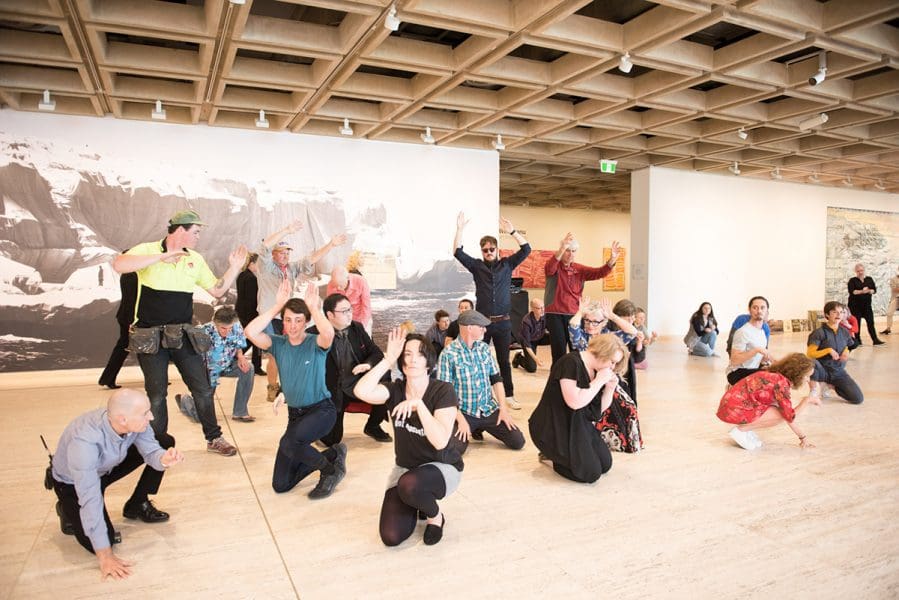
There are moments when the action is de-centred, with 38 performers simultaneously reliving their own bodily memory. One walks briskly while jotting notes; another appears to inspect and approve a section of painting or construction; a young man walks backwards with an old-fashioned camcorder. There are voices too: “Yep, yep, looking good!” “Are you serious?!” “John!!!” This physical and vocal cacophony gives a sense of the chaos and busyness of backstage preparation. It also feels a bit like amateur Theatresports: one of the occupational hazards, perhaps, of working with non-professional performers.
While this chaos unfolds, some performers speak to a handheld microphone, recounting personal anecdotes that form a collective archive. A Wiradjuri woman tells of her experience as an attendant for Project 32, barrangal dyara (skin and bones), 2016, by Jonathan Jones. She speaks of remembering her ancestors through the swaying kangaroo grass, and hearing the voices of the project’s soundtrack calling out in language to lost cultural objects. Barrangal dyara took place on the site of Sydney’s Garden Palace, where countless stolen Indigenous objects were lost in the 1882 fire that destroyed the structure. Individual experiences like this, played out physically and verbally in The Work, are perhaps the most valuable legacy of Kaldor Public Art Projects.
Forming a backdrop to the performance is a wallpapered image of Project 01, Wrapped Coast, 1969, and through this immersive image I get an inkling of the wildness and daring of it. I sense what it might have been to be part of it, that first foray, before Kaldor was an institution with an exhibition in his honour and a gallery in his name – when he was a young Hungarian migrant with a textile business, a burgeoning art collection and a vision for bringing cutting edge European art to Australian audiences.
On the adjacent wall is Imants Tillers’s A New World Rises, 2019, a painted depiction of the wrapped coast itself. Tillers, a 19-year-old art student at the time, credits the experience of assisting on this work with setting him on his path as an artist. In the stairwell is another new commission by Ian Milliss, for whom the early Kaldor Public Art Projects were influential. It was around that time that Milliss started to shift his focus away from art institutions, eventually eschewing an art practice altogether in favour of working for trade unions.
After the performance, I venture downstairs to the main Making art public exhibition. One comfortable corner of the gallery feels like a quiet form of defiance in a space full of white cubes. Here, an octogenarian woman is relaxing in a green vinyl armchair. A younger woman sits on a rug as they pore over a book together. Hannah is the eldest of the readers employed for Agatha Gothe-Snape’s work Lion’s Honey, and the two of them are part of, and yet apart from, the exhibition. A rotating roster of readers will take the chair, or whichever space in the gallery they choose, and read books each day for the duration of the exhibition.
To read is to enter another world, to be surprised; to be open, and avoid stasis. These readers are accruing knowledge, and having an experience that is internal, temporal and immaterial. This is what public art (and Kaldor Public Art Projects) does at its best: it enables those who experience it to learn, feel and experience; perhaps, like a rare book, it might even register a permanent change.
There is a letter pinned to the wall above the green armchair. It is addressed to the readers, but also to us the audience, from the artist. Towards the end of the letter, Gothe-Snape writes, “This is an improvisation. The conditions are always changing, and the parameters are always negotiable. Take pleasure. Have ease.”
These last three points could have come straight from Frankovich to her performers, or even from the employers to the precarious workers who give of themselves to each Kaldor Public Art Project. They could even constitute a code for the audience to work by, and to live by.
The Work
Alicia Frankovich
Art Gallery of New South Wales
14 and 28 September, 1pm
Making art public: 50 years of Kaldor Public Art Projects
Art Gallery of New South Wales
7 September – 16 February